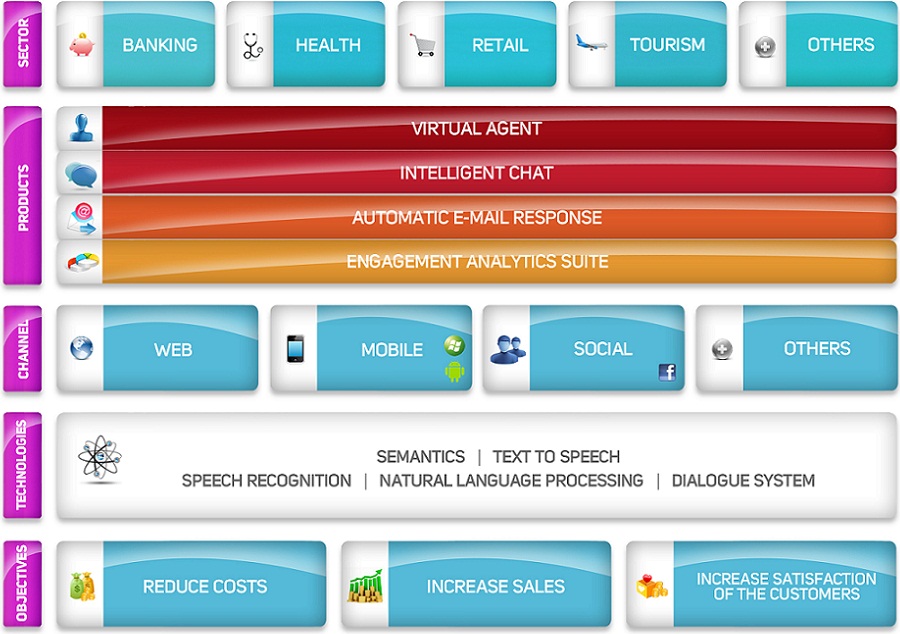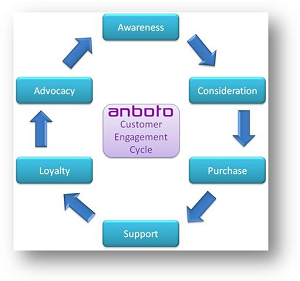Anboto Customer Engagement Platform
Anboto is the only company that can offer you the outstanding technologies for Customer Engagement in the same platform.

Customer Engagement
In March 2006, the Advertising Research Foundation announced the first definition of customer engagement:
"Engagement is turning on a prospect to a brand idea enhanced by the surrounding context."
Online customer engagement refers to:
- A social phenomenon enabled by the wide adoption of the internet in the late 1990s and taking off with the technical developments in connection speed (broadband) in the decade that followed. Online CE is qualitatively different from the engagement of consumers offline.
- The behaviour of customers that engage in online communities revolving, directly or indirectly, around product categories (cycling, sailing) and other consumption topics. It details the process that leads to a customer’s positive engagement with the company or offering, as well as the behaviours associated with different degrees of customer engagement.
- Marketing practices that aim to create, stimulate or influence CE behaviour. Although CE-marketing efforts must be consistent both online and offline, the internet is the basis of CE-marketing.(Eisenberg & Eisenberg 2006:72,81)
- Metrics that measure the effectiveness of the marketing practices which seek to create, stimulate or influence CE behavior
Engagement is a holistic characterisation of a consumer's behaviour, encompassing a host of sub-aspects of behaviour such as awareness, consideration, Purchase, Support, Loyalty, Advocacy:

- Awareness: Customers have not previously heard of your brand, products or services. You need to make a good first, second and third impression so that they consider you when they are further along the engagement cycle.
- Consideration: Customers are looking for information so that they can research and compare between competitors and offerings. Communicate your value proposition to them and build up confidence in your brand so that they will purchase from you.
- Purchase: Customers are busy people and want to make the purchase in a way that is convenient for them. Be as flexible as possible and make it simple and straightforward for them to make the purchase.
- Support: Customers want to purchase from brands that will provide good service and support. Make sure to support them with any issues, questions or complaints they may have.
- Loyalty: Customers like to be appreciated and rewarded for the business they are providing you. Offer recognition and incentives for loyal customers.
- Advocacy: Customers who are happy with the experience they encounter with your brand are likely to recommend you to their peers. Empower them with the ability to easily spread the word on behalf of your business












